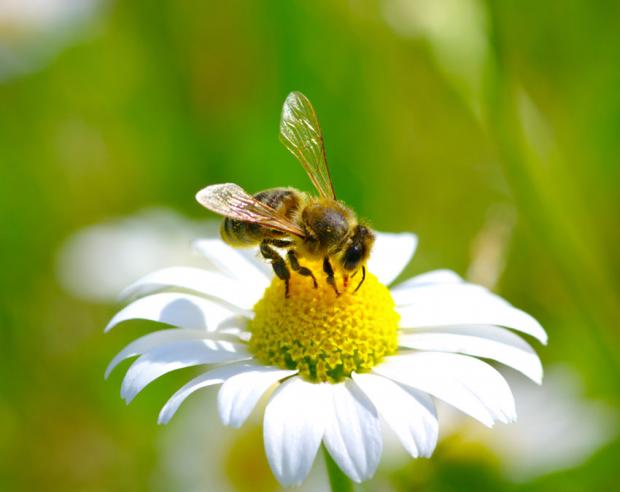The Plight of the Honey Bee
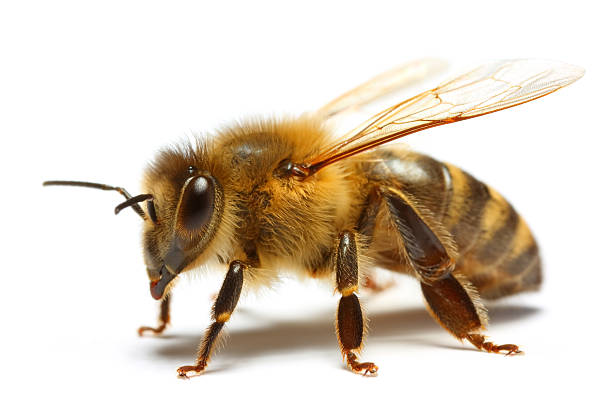 |
June 15-21 2018 is National Pollinator Week. With three-fourths of the world’s flowering plants and about 35 percent of the world’s food crops dependent on animal pollinators to reproduce, it is in everyone’s best interest to stay informed of their plight. In New York alone more than 400 species of native bees are the reason we have apples, maple syrup, snap peas, corn, blueberries and a host of other bee-pollinated foods that are absolutely crucial to the health of both our economy and our diets. Combine their efforts with those of butterflies, moths, birds, bumblebees, hover flies, beetles, and bats, many of whom are also seeing devastating losses in population, and it’s not difficult to want to help somehow. Although the threat of colony collapse disorder, or CCD, is down, honeybee colonies and other pollinators around the world remain in peril as a result of the spread of mites, bacteria, viruses, fungus, hive beetles and the now proven deadly effect of toxic pesticides. According to the USDA APHIS Honey Bee Pests and Diseases Survey Project Plan for 2018 published in April 2018, over the last eight years winter (hive) losses remain unsustainably high ranging from 22 percent to 36 percent nationally, and in the last two years summer losses equaled or exceeded winter losses. These rates of loss threaten the viability of United States beekeeping operations and the production of pollination dependent crops as well as honey production. According to another study recently published by the European Food Safety Authority the problem is both deeply researched and unambiguous: most uses of neonicotinoid pesticides represent a risk to both wild and honeybees. Short story: Where bees are not being poisoned by pesticides their immune systems are down, and they are still dying off at catastrophic rates. Providing our pollinators with a place to call home, an easy source of water, and lots of pollinator friendly plantings will help us help them, and allow us to enjoy them for generations to come. |
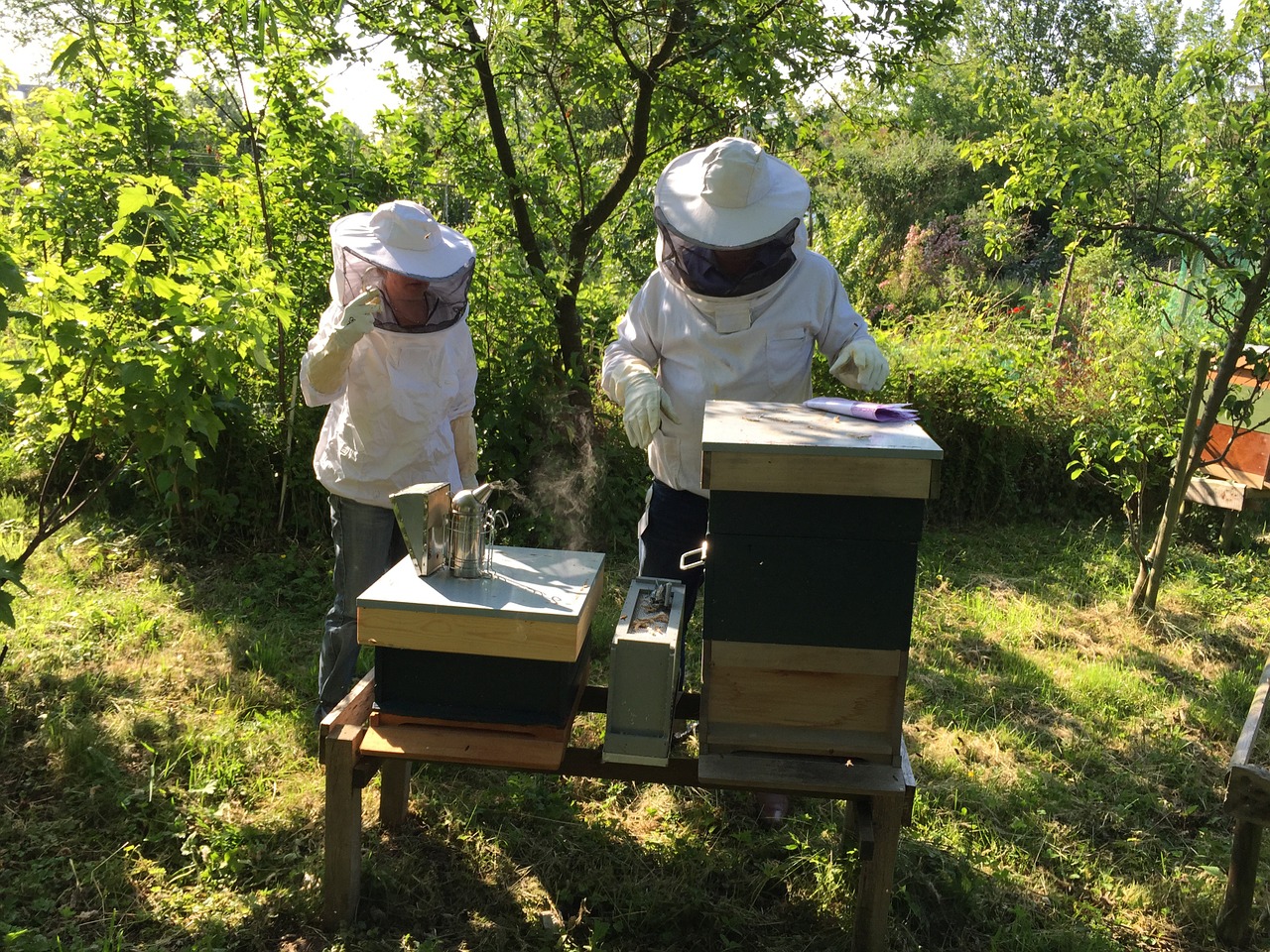 |
Locally our pollinating friends won a big battle in Buffalo on April 9, 2017 when the Buffalo Green Code took effect. Article 6, Paragraph 6.2.2 C of the Green Code, found here, outlines the rules to start your own apiary right here in our hometown. With the updated Green Code, the city of Buffalo has followed the lead of many larger cities in welcoming urban beekeeping to our area. While many of us think of beekeepers as old guys out in a farm field surrounded by bee boxes, the face of beekeeping has changed in recent years. More and more urban and suburban dwellers have been attracted to the art of beekeeping, and not just for the honey. With increased awareness of the plight of the bees, many people from a wide variety of backgrounds have decided to become backyard beekeepers. In recent years, this has become a more attainable goal with increased availability of supplies and local beekeeping classes. Back in 2012, the folks out at Masterson’s Garden Center in East Aurora had been hearing about the continual loss of honeybee colonies in our part of the world and decided to try out beekeeping. Like many who are attracted to beekeeping as a hobby, it seemed like a good way to do something that might help the bees in their area. Since they were keeping bees at the garden center, they also started selling beekeeping supplies. Since that first year, Masterson’s network of local beekeepers and bee supporters has grown to over 1,000 households, many of whom are new to beekeeping. For those thinking of becoming a backyard beekeeper, there are a few things to consider before bringing home your first colony. First, experts recommend taking classes. Lots of classes. Before bringing a box of stinging insects into your yard, it’s important to understand what you’re getting yourself into. That said, bees can be safely kept on almost any property with proper hive placement and management techniques. Keeping a hive or two in your yard requires much less work than most people imagine, but there are a few things a beekeeper, particularly in an urban or suburban environment, should stay on top of in order to “bee” a good neighbor. A proper flight path to and from the hive is critical to avoid stinging incidents. Good maintenance of the hive’s resources is also critical, as a crowded hive is more likely to swarm. Swarming, while natural, can often result in a colony establishing itself in an undesirable location (like your neighbor’s compost bin). Keeping the hive healthy is also critical, as urban bees are often closer to neighboring hives than their country counterparts, and the spread of bee-killing disease is what we’re trying to overcome in the first place. Because of our location here in Buffalo, new beehives are best established in mid-Spring so that they have time to build up their resources before the long, cold winter sets in. If you have an interest in setting up your own apiary, take the time between now and next spring to meet some local beekeepers at a club. Take some classes. Ask lots of questions so you’ll be prepared to be as successful as possible. Now, for those of us who aren’t able, interested, either or both, in keeping honeybees, there is still plenty that we can do to help our native bee population as well as other important pollinators in addition to buying up all of our local beekeepers’ amazing honey. Who are these other pollinators? How can we draw them into our little corner of the world, and what can we do to help them flourish in our company year after year? |
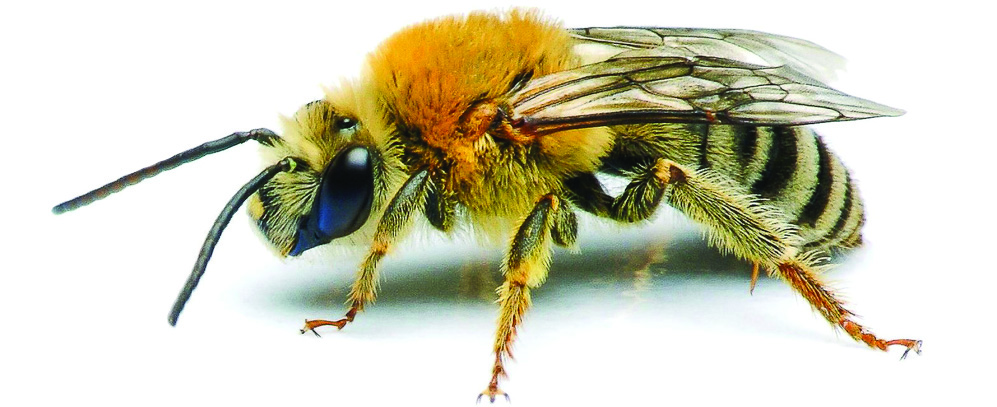 |
While the honeybee has become the “poster child” for the declining bee population, our native bee populations are suffering as well. Many people are not aware that we have over 450 species of native bees here in NY. The wild squash bee, for example, are the sole pollinators of some varieties of squash here in New York. So, these native bees provide important pollination to many crops, including those you might be growing right in your own backyard. Inviting these stingless, solitary bees into your veggie garden provides both you and the bees with food, as they’ll get right to work pollinating your squash, beans, and tomatoes. Creating a habitat for these creatures can be as simple as leaving a bare patch of soft earth near the garden for ground nesters, or adding a native bee house to a fence post. |
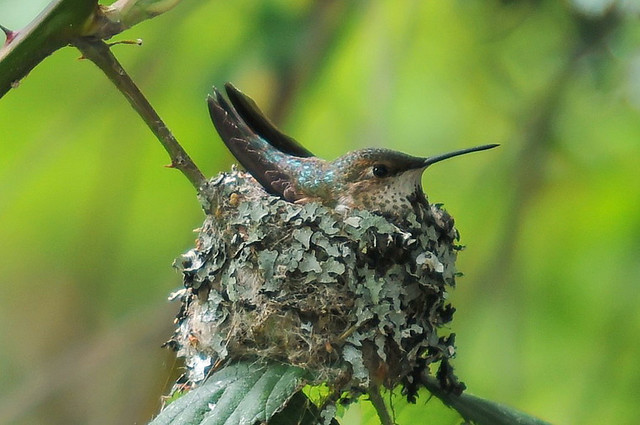 |
Hummingbirds are pollinators! They began to arrive to Buffalo on May 2nd of this year, and will likely pass through again to their southern homes around September. They do nest here, however, and prefer leafy trees and large shrubs 10 feet or higher off of the ground in which to nest. Their nests are most often made of spider silk, lichen, and soft fibers from catkin-bearing trees and shrubs such as cottonwood, beech, birch, chestnut, maple and willow. Sweet fern, clematis, honeysuckle, milkweed, blanket flower and lamb’s ear also provide the silken, fuzzy, elastic nesting materials that hummingbirds need to make a nest a safe and comfortable home. Hummingbird feeders are easy to find in nearly every store, and a mixture of ¼ cup sugar to 1 cup water feeds them well. The color red is attractive to them; most feeders are colored red, so you can skip the red dye in the water. If you do go the feeder route, remember to clean it either by boiling it in plain water or either A) scrubbing it with a mixture of 3 parts water to 1 part vinegar if no black mold is found or B) a mixture 3 parts water to one part bleach if black mold is found. Rinse thoroughly. Do not use dish soap to clean a humming bird feeder, as any residue left behind harmful to their stomach linings. Replace the contents at least monthly to avoid fermentation or the establishment of black mold or fungus, all of which can be deadly to them. Tubular flowers which bloom well in Buffalo such as perennial trumpet vine, bee balm (though be sure you get a cold hardy variety), hardy hibiscus (ditto), columbine, hollyhock, cleome and annuals such as verbena, snapdragon, salvia, crossvine, lantana and petunias all hold deep wells of nectar so are cornucopias for hummingbirds. Like butterflies and other bird species, once you attract them they will likely stop by for years to come. It is something to see and hear many of them darting around a food source, humming like bees, chirping, quarreling and dancing around in the way only hummingbirds can. |
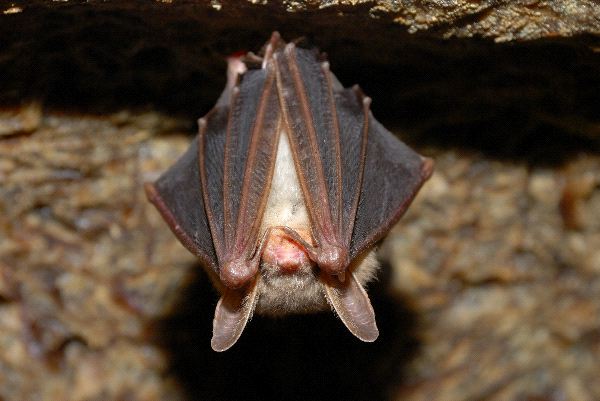 |
The good news in the hardship-riddled world of the pollinator is that bat populations in Western New York seem to be rebounding from another nation-wide catastrophic die-off caused by a fungal disease called white nose syndrome, beginning in 2006 and simultaneous with the colony collapse catastrophe. You can go for a walk and don’t have to search too hard to find Tifft Farm’s bat condo village, and can even host them in a bat house or condo in your own back yard if you like. There are many websites where you can buy bat houses and condos pre-made or find blueprints to build one of your own. We can thank bats for giving us tequila, as the agave plant is pollinated solely by bats. Still, it would be a bit of a stretch to call Western New York bats pollinators when in fact they are mainly insectivores in this part of the country. As a result, bats in this region only act as pollinators by happy accident. However, because they are nocturnal, our mammalian pollinators and honeybees coexist beautifully. Equally important, bats also eat not only pesky pollinators like the mosquito but many other insects that would otherwise compete with honeybees for food. So, housing bats simultaneously with keeping bees ultimately helps both the beekeepers and those lovely buzzing beauties. Together bats and bees can help one other bring back their populations that were both so completely devastated in 2006. Admittedly they do have a habit of flight that is both awe-inspiring and nerve-wracking, especially when one flaps around in terror to be inside the living space of your human home. Rest assured it is most likely that they are not dive-bombing you, trying to suck your blood or bite you with their rabies frothed jaws: they are just trying like hell to get out of your house ASAP. Yes! They annihilate vast armies of biting female mosquitos on a nightly basis! No! They are likely not trying to bite you at all! Yes! They help our honeybee colonies become fat and happy. What’s not to love? Also, in that happy event that they do pollinate a flower here in Western New York, they are nocturnal pollinators, like moths, which invites us as gardeners to introduce a whole new palette of beauty to our gardens when the shadows stretch long across the lawn and into the night. Night blooming flowers are pale in color and either sweet or musty smelling so as to attract pollinators. Moonflower, Angel’s Trumpet (Datura), Evening Primrose, Four O’Clocks and Night Phlox all smell lovely and serve as great attractors of our leathery winged friends and their plump, fuzzy bodied night feeding companions. Not only are they fragrant and lovely, not only do they help us to help bats and moths, they draw us in and invite us to savor our outdoor spaces a little longer, and a lot more. However, in the interest of full transparency, and granted that we are not a society that hunts and eats them, and though we do applaud their comeback, bats can and do carry nasty viruses including rabies. So it’s best to inform young ones to keep their hands off of them, to only encourage their pollinator and terminator tendencies and to not to make them pets, no matter how cute they appear to be in bat rescue videos on Facebook. |
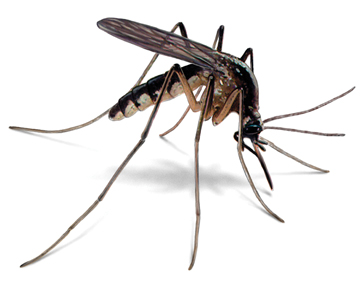 |
Besides inviting bats into your backyard, you can simultaneously repel that other pollinator that nobody wants around, the mosquito, by planting citronella grass, not to be confused with citronella geranium, in a pot on casters to be rolled indoors in the wintertime, as it grows relatively large and does not do well outdoors in frosty weather. Bee balm, marigolds, floss flowers, catnip, rosemary and lavender all work wonders to repel the buggers too. Still, who knew they had redeeming virtue? Mosquitos are pollinators; good for them. Bats eat them; good for us. |
 |
It’s such an amazing gift to be on the monarch migratory route! Their home is not here, so we don’t have to worry about helping them nest. However, it’s pretty easy to create a space for them to fuel up for their nearly five thousand mile journey between Canada and Mexico. Ironweed, milkweed, zinnia, hyssop, verbena and butterfly bush all provide ample nutrition for them, while milkweed also gives them their preferred place to deposit their young. Caging some orange wedges into a suet feeder gives them both sweet nutrition and the water they need and is quite attractive to them as well. Hmm… I wonder if, finding no milkweed around, monarchs would choose to lay their eggs on or near the orange slices…? The added bonus of offering oranges if you’re especially lucky will be to attract orioles to your yard as well. |
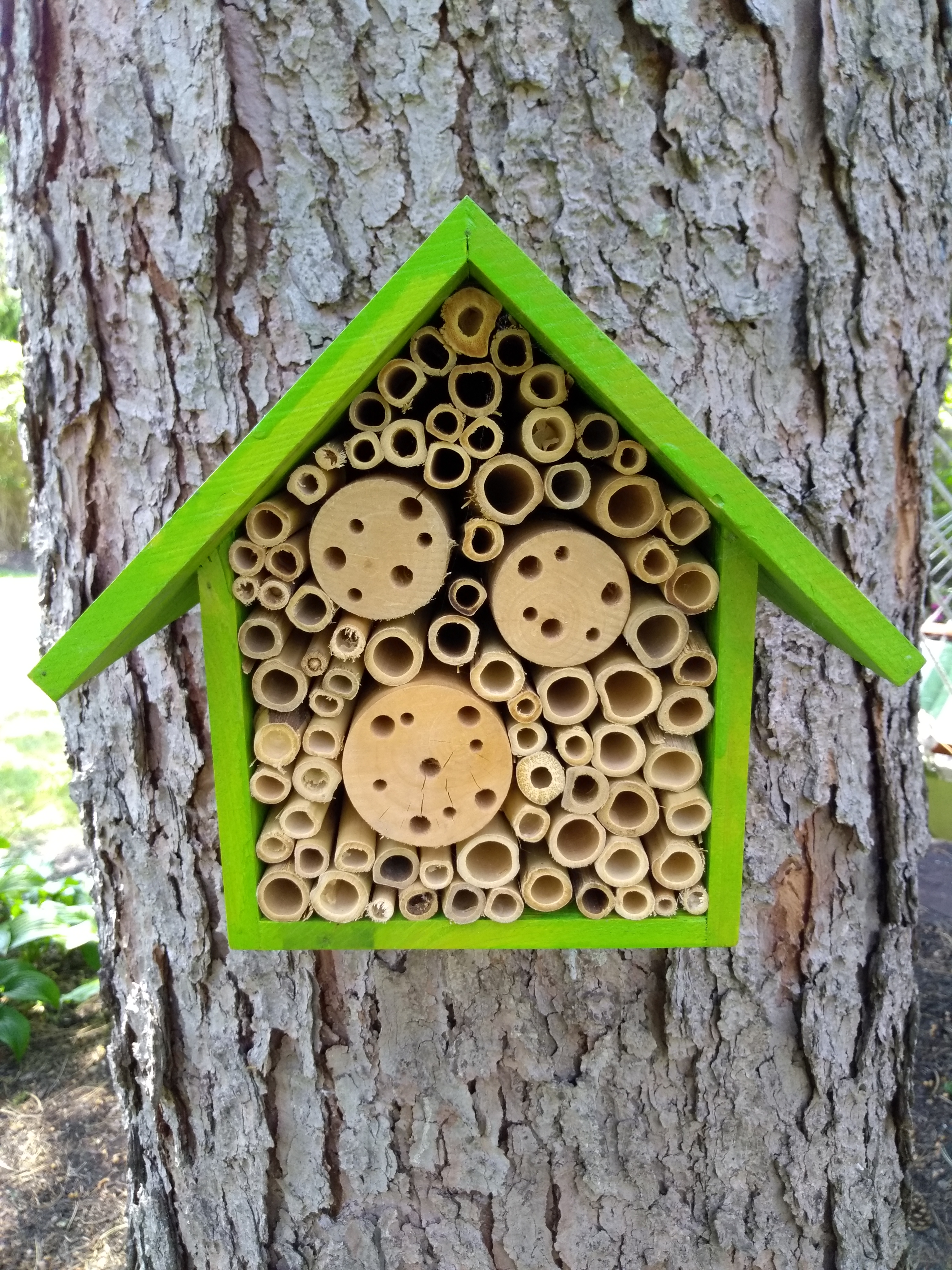 |
Here’s a fun, practical and useful yard art project. Build an insect hotel or bee box! Many pollinators including stingless bees and wasps are solitary by nature and use these spaces to hatch their babies. Like bat houses and condos, insect hotels can be found on the web in both pre-build and kit form. Scroll Pinterest for insect hotel ideas and you’ll find plenty there alone. They all have one thing in common. They provide smooth cylindrical space at least 15cm deep and 4-9 cm in diameter. Besides, not only are they a help to pollinators, they’re beautiful in that funky way that we love here in Buffalo. These nesting sites also provide shelter for butterflies in windy weather, and a place to hunker down for other pollinators over the course of the winter. Place your insect hotel in the sun in early season to offer early season warmth, where morning sun (and not afternoon sun) will help them feel at home. We do both what we must and what we want in our gardens in order to create a space that is productive, inviting, awe-inspiring, peaceful and so much more. Maybe this year that means also doing a little bit more to help our pollinator friends. |

